Compact Nearfield Monitors Perfect for FOH & Small Broadcast Setups
I personally love having a set of nearfield monitors at FOH when I am mixing live. However, sometimes your footprint needs to stay very small. This is where the Genelec 8010A might be your new best friend. These little guys are ridiculously compact, have a very linear phase and frequency response, and are easy to drop into a compact FOH setup or a small broadcast booth. I’ve used them on corporate shows and broadcast rooms where space is tight, and they’ve consistently delivered.
Buy the Genelec 8010A at Sweetwater. (Affiliate Link)

Why I Like the 8010A for FOH & Broadcast
Small footprint, great sound: At roughly 7.7″ tall with the Iso-Pod, they fit anywhere and travel well—two of these speakers plus audio interfaces and cables can easily slide right into a Pelican 1510.
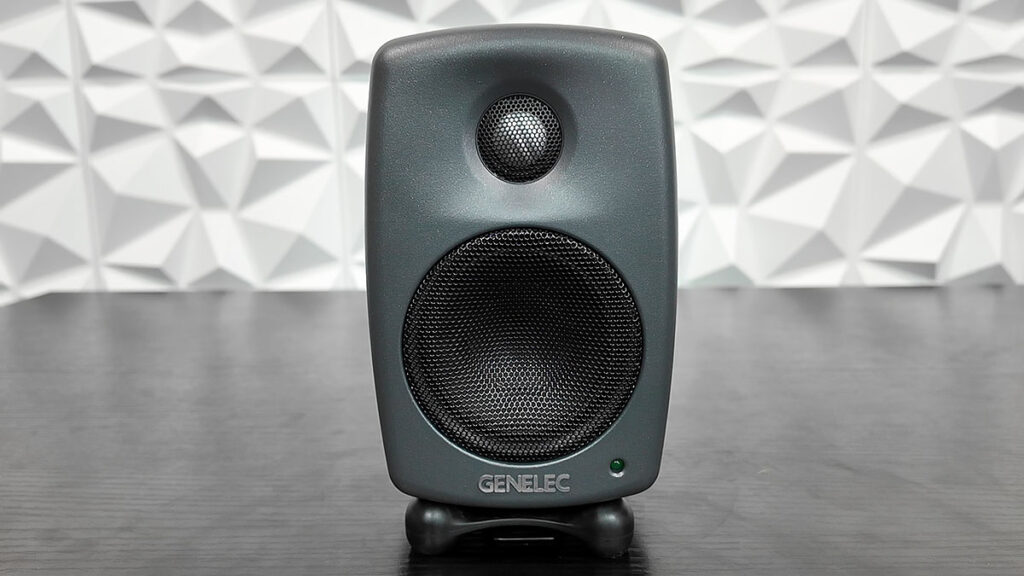
The voicing is balanced and honest. Imaging is stable, transients are clean, and they sound “bigger” than a 3″ woofer would suggest.
Set-and-forget power saving: Intelligent Signal Sensing (ISS) auto-wakes the speaker when it detects audio and sips power when idle—no more power-cycling between sessions.
Quick Specs on the Genelec 8010A
- Bi-amped: 25 W LF + 25 W HF with a 3 kHz crossover
- Max level: 96 dB SPL @ 1 m (short-term)
- Published bandwidth: 67 Hz (-6 dB) to 25 kHz (-6 dB); free-field response ±2.5 dB from ~74 Hz-20 kHz
- Inputs: Balanced XLR
- Power draw: ~30 W max; <0.5 W in standby with ISS
What My Measurements Looked Like
One of the key things I always do when using equipment is make sure that the published specs match what my product is producing. I used Rational Acoustics Smaart along with a calibrated measurement microphone. Please note that I took these measurements in a room that was not a perfectly calibrated, tuned measurement room, so my measurements will look slightly different than Genelec’s published specs.
Here are the 10 transfer function measurements from slightly different positions that I took:

I then averaged them together to get this curve, which lines up very close to the published specifications from Genelec:
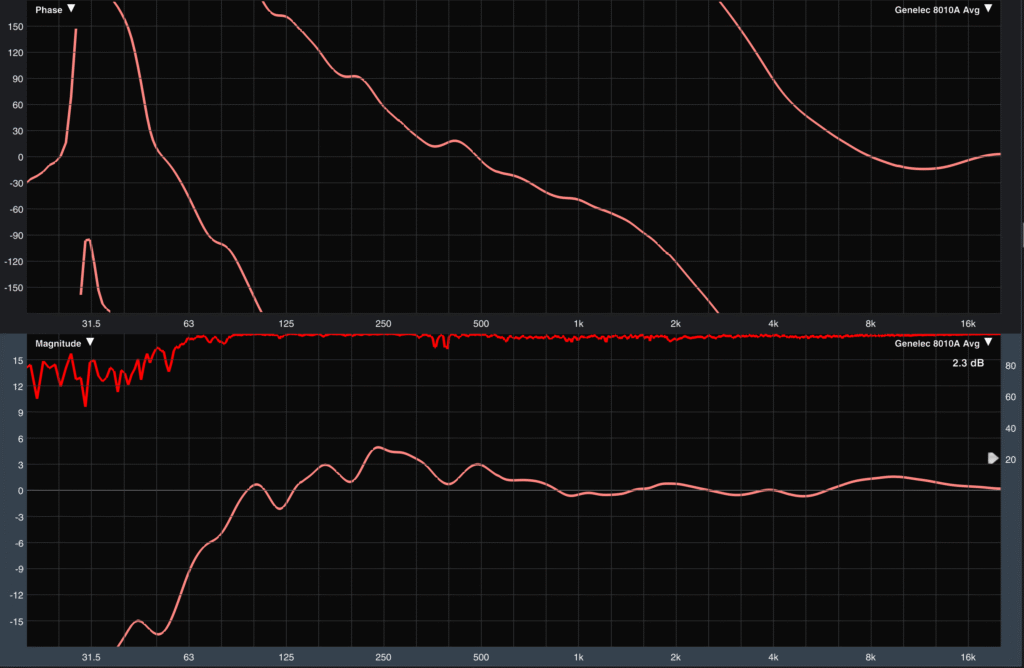
My measurements align well with the published low-end figures, considering room and placement. The low end is tight and honest, but due to the small size of these monitors, don’t expect sub-bass heroics. Remember, these are a 3″ woofer, but you can expect clean decisions in the vocal and midrange where we live.
Tuning the 8010A: Use the DIP Switches (They Matter)
On the rear panel of the 8010A monitors, you get simple but powerful room tools:
- Desktop Control: -4 dB around 200 Hz to counter the “desk hump” when placed on a flat surface.
- Bass Tilt: -2/-4/-6 dB shelving at 100 Hz to rein in boundary gain near walls/corners.
- Sensitivity -10 dB: Handy pad if your monitor output is hot.
- ISS Disable: Only if you don’t want auto-standby/auto-wake.
Bass Tilt Adjustments
The Bass Tilt control lets you fine-tune the low-end when the speakers are near walls, corners, or other reflective boundaries. It offers three attenuation levels -2 dB, -4 dB, and -6 dB @ 100 Hz — to counter the low-end build-up you’re fighting. Start with -2 dB if the monitors are close to a wall and increase as needed. This feature keeps the 8010A’s low-end response tight and linear even in small, reflective spaces.

Desktop Control
The Desktop Control switch applies a -4 dB cut around 200 Hz to counteract the low-mid bump that often happens when monitors sit directly on a desk or console surface. This simple adjustment smooths out the 160–200 Hz “thump” caused by surface reflections and gives a more natural low-mid balance for nearfield listening.
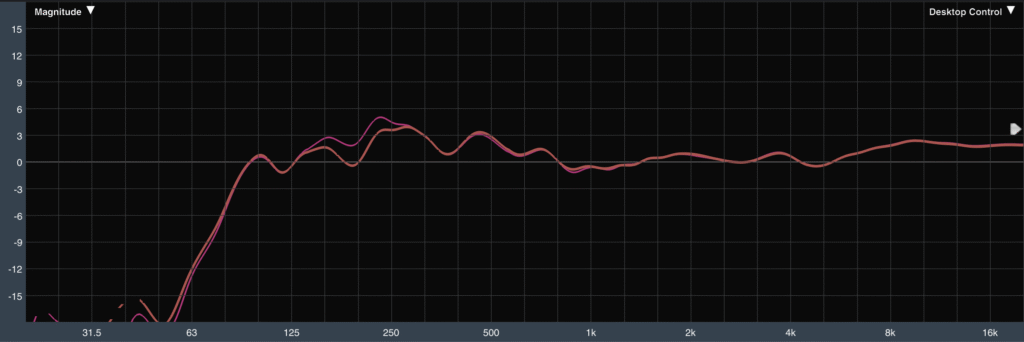
Intelligent Signal Sensing (ISS)
The ISS function automatically powers the monitor on when it detects an input signal and drops it into standby (< 0.5 W) after playback stops. It’s ideal if you want to leave your rig powered but not wasting energy between sessions. If you prefer manual power control, flip the “ISS Disable” switch on the rear panel to ON. The speaker will remain active until you use the main power switch.
Mounting the Genelec 8010A
The 8010A speakers ship with the “Iso-Pod” attached to the bottom, allowing you to angle/decouple them on a desk. There is also a ⅜” UNC standard mic-stand thread on the bottom of the speaker if you want to mount the near-field monitors to a stand. Genelec also has plenty of bracket options for wall/ceiling/stand mounting available for purchase on their website.
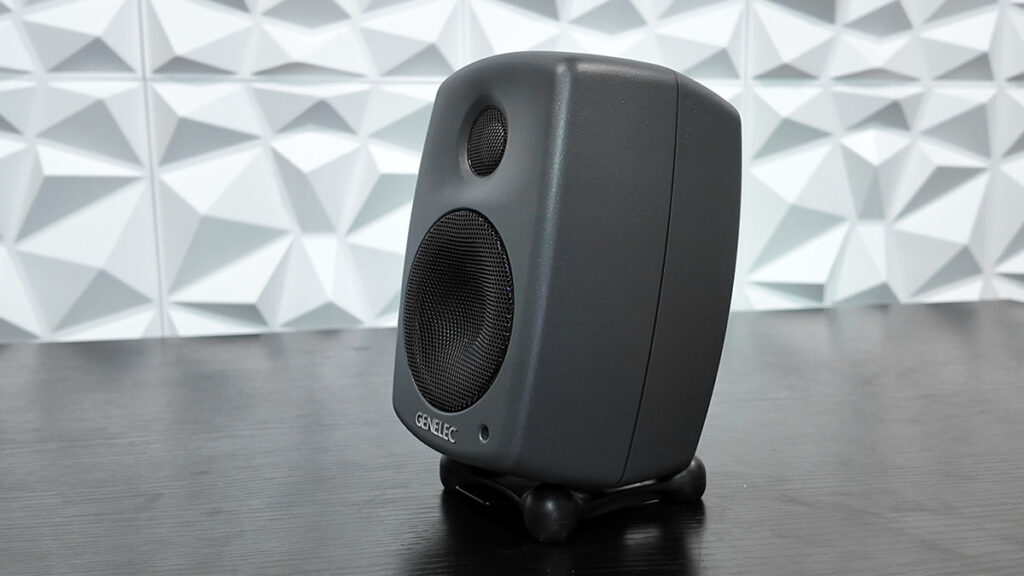
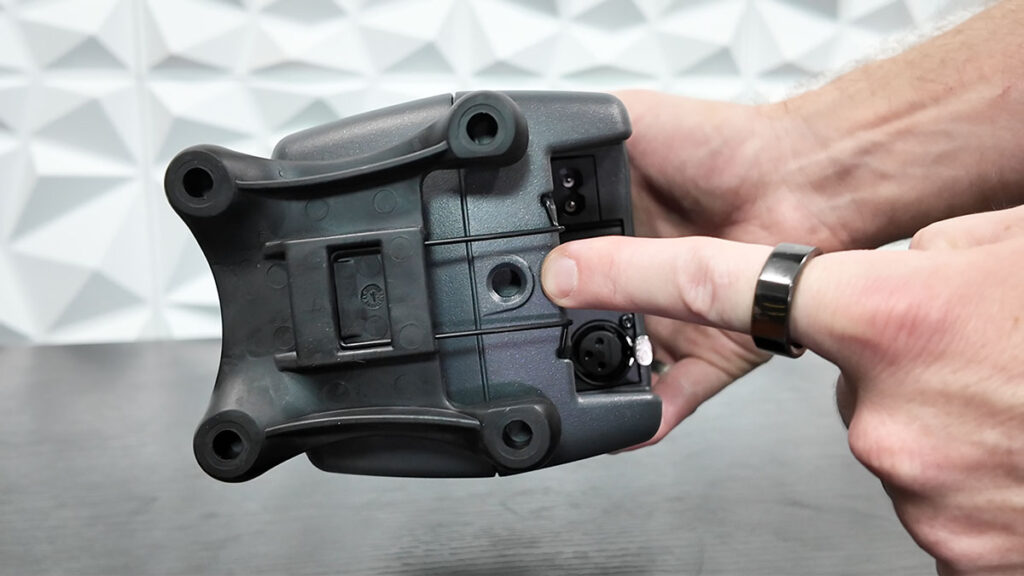
How They Sound
These speakers are clear with their tone and imaging. The highs and mids are very honest with your mix and will give a good example of what most users will be listening to your stream on.
In my opinion, these Genelec’s are perfect for FOH nearfields, small broadcast booths, and mobile rigs when headphones aren’t enough.
Just remember that physics is physics, and there will be a limitation to the low end. If you need to feel 50–60 Hz, consider adding a sub or stepping up to Genelec’s larger offerings, such as the Genelec 8030C. For their footprint, though, the translation is excellent.
Bottom Line
The 8010A is a tiny, honest, travel-friendly monitor that is a wise decision when space is limited. For FOH nearfields and compact broadcast rooms, they’re a fantastic pick—especially when you use the built-in EQ switches to match your placement.
Disclosure:
The Genelec 8010A monitors featured in this post were provided to me free of charge by Sweetwater and Genelec for an honest review. I’ve used these monitors on multiple shows prior to this review, and as always, all opinions here are my own. I only review products I personally use and trust in real-world environments. Some product links in this post are affiliate links, which help support my channel and website at no extra cost to you.
